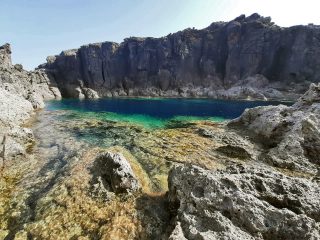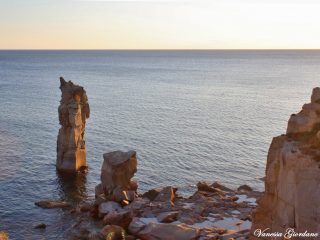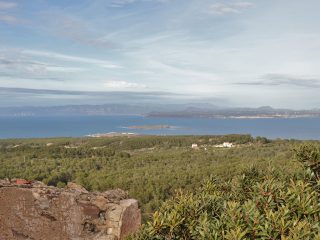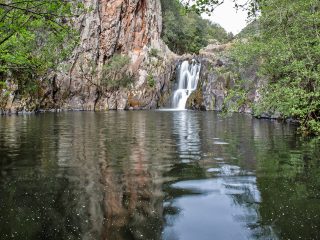The forest of Tamara Tiriccu lies in the area of Nuxis. It extends for 1,470 hectares, bordering with the Forest of Pantaleo to the south and with the Forest of Gutturu Mannu and the Monte Arcosu Reserve to the east.
In the nineteenth century, a significant part of the land was given over to exploiting the forest for the production of railway sleepers. The rest of the land was used by the local population for farming and breeding, as well as a few mining settlements. This led to excessive exploitation of the land with grazing, fires, wood cutting for fires, coal and poaching.
In the early years of the twentieth century, the expropriation of a large surface area started the slow process of reviving the forestry heritage and re-stocking fauna. The former ERSAT regional body then purchased a large part of the forest in 1993.
The highest peak in the area is the Punta is Caravius (1,116 m a.s.l.) followed by Monte Tiriccu (1,104 m a.s.l.). These dominate the forest with their rocks of granite, porphyritic or metamorphic origin.
Various rivers flow through the forest, including the rio Barisone and rio Tiriccu. Both are tributaries of the rio Mannu, which ends its course in the artificial Bau Pressiu Reservoir.
The vegetation is typically Mediterranean forestry, with the presence of numerous endemic species. In particular, we find the holm oak, in different parts of the centuries-old forest, as well as strawberry tree, mastic tree, phillyrea and juniper.
Bird species include the Goshawk, the buzzard, the golden eagle, the peregrine falcon, the Sardinian partridge and the common raven. On the ground, on the other hand, we find the Sardinian hare, the wild rabbit, the fox, the weasel, the boar and the Sardinian deer.
The forest has two shelters, used by Tuscan rangers who exploited the forest to build the railway ties. They are the Cantina di Barisone and the Rifugio Macciocco, restored over the years by staff from the Regional FORESTAS Body.





















